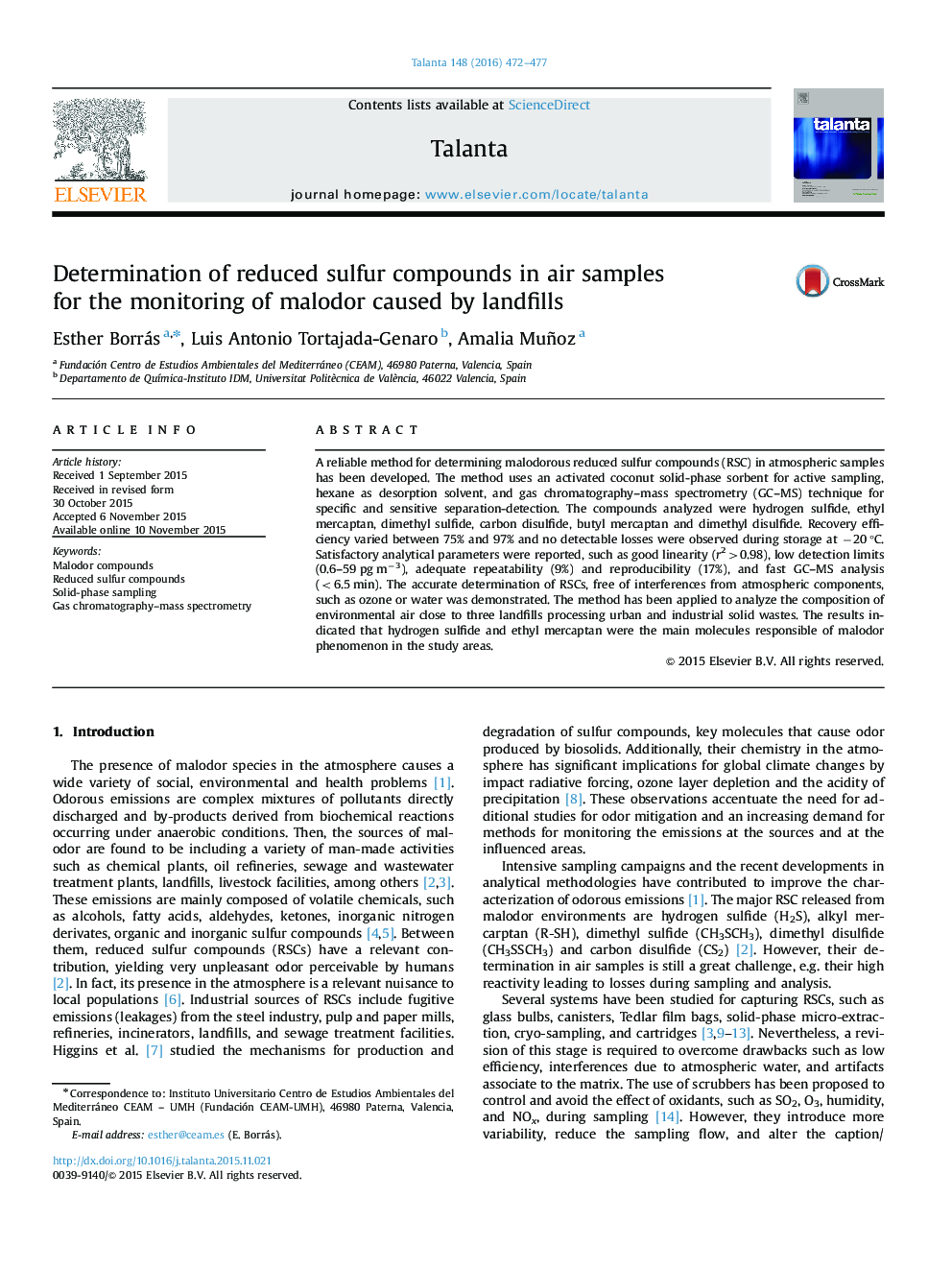| Article ID | Journal | Published Year | Pages | File Type |
|---|---|---|---|---|
| 1243809 | Talanta | 2016 | 6 Pages |
•Fast, sensitive, reproducible method for determining malodorous RSCs in ambient air.•Based on activated charcoal surfaces sampling, hexane extraction and GC–MS.•Hydrogen sulfide and ethyl mercaptan were the major pollutants at landfill áreas.•Methodology useful for the implementation of finger-printing mitigation actions.
A reliable method for determining malodorous reduced sulfur compounds (RSC) in atmospheric samples has been developed. The method uses an activated coconut solid-phase sorbent for active sampling, hexane as desorption solvent, and gas chromatography–mass spectrometry (GC–MS) technique for specific and sensitive separation-detection. The compounds analyzed were hydrogen sulfide, ethyl mercaptan, dimethyl sulfide, carbon disulfide, butyl mercaptan and dimethyl disulfide. Recovery efficiency varied between 75% and 97% and no detectable losses were observed during storage at −20 °C. Satisfactory analytical parameters were reported, such as good linearity (r2>0.98), low detection limits (0.6–59 pg m−3), adequate repeatability (9%) and reproducibility (17%), and fast GC–MS analysis (<6.5 min). The accurate determination of RSCs, free of interferences from atmospheric components, such as ozone or water was demonstrated. The method has been applied to analyze the composition of environmental air close to three landfills processing urban and industrial solid wastes. The results indicated that hydrogen sulfide and ethyl mercaptan were the main molecules responsible of malodor phenomenon in the study areas.
Graphical abstractFigure optionsDownload full-size imageDownload as PowerPoint slide
